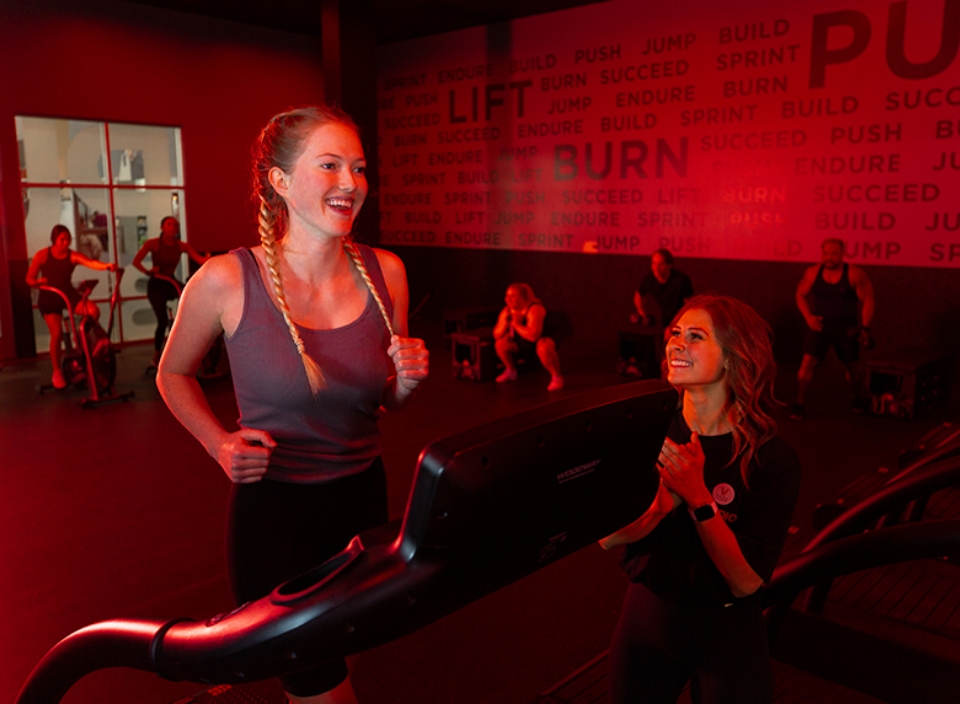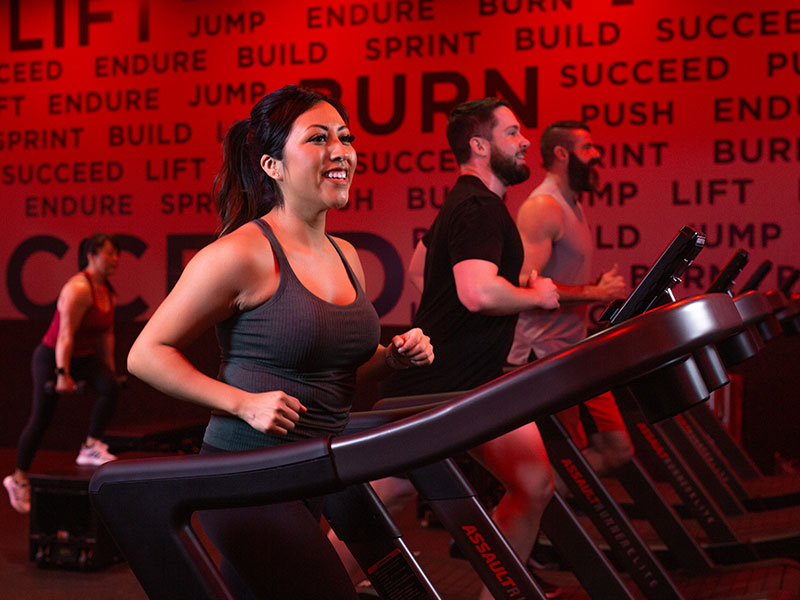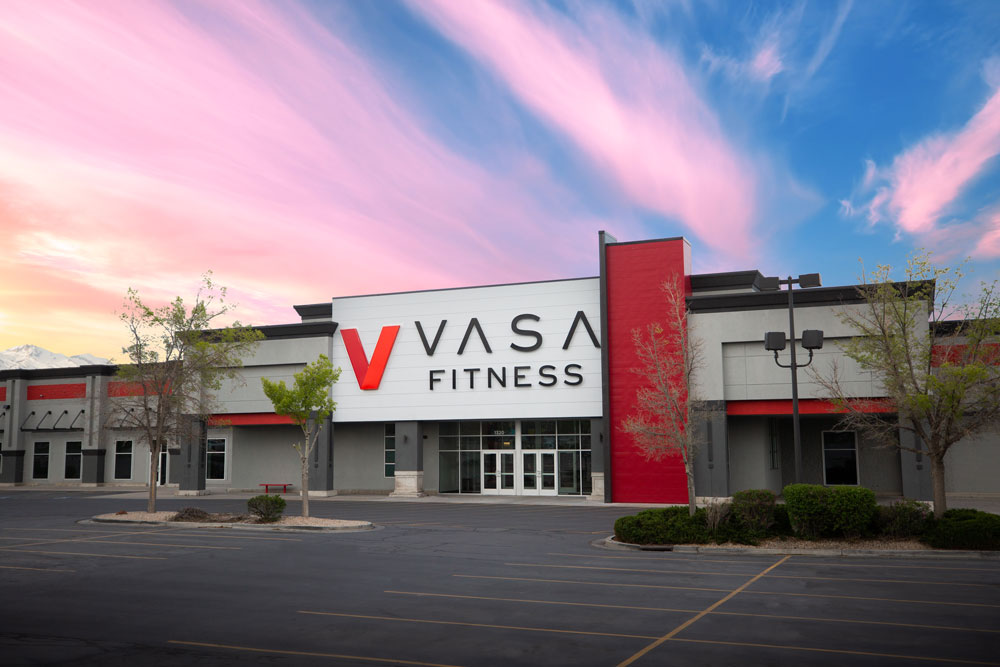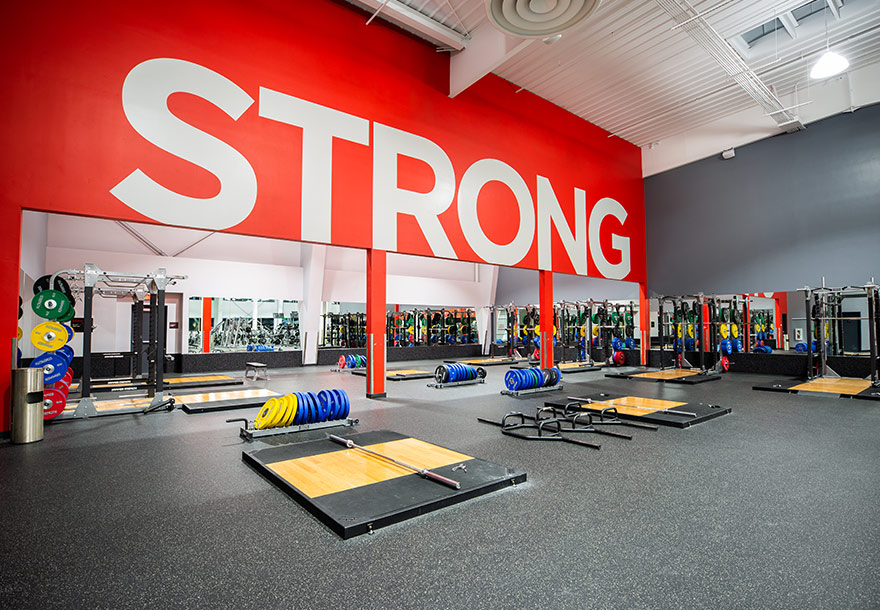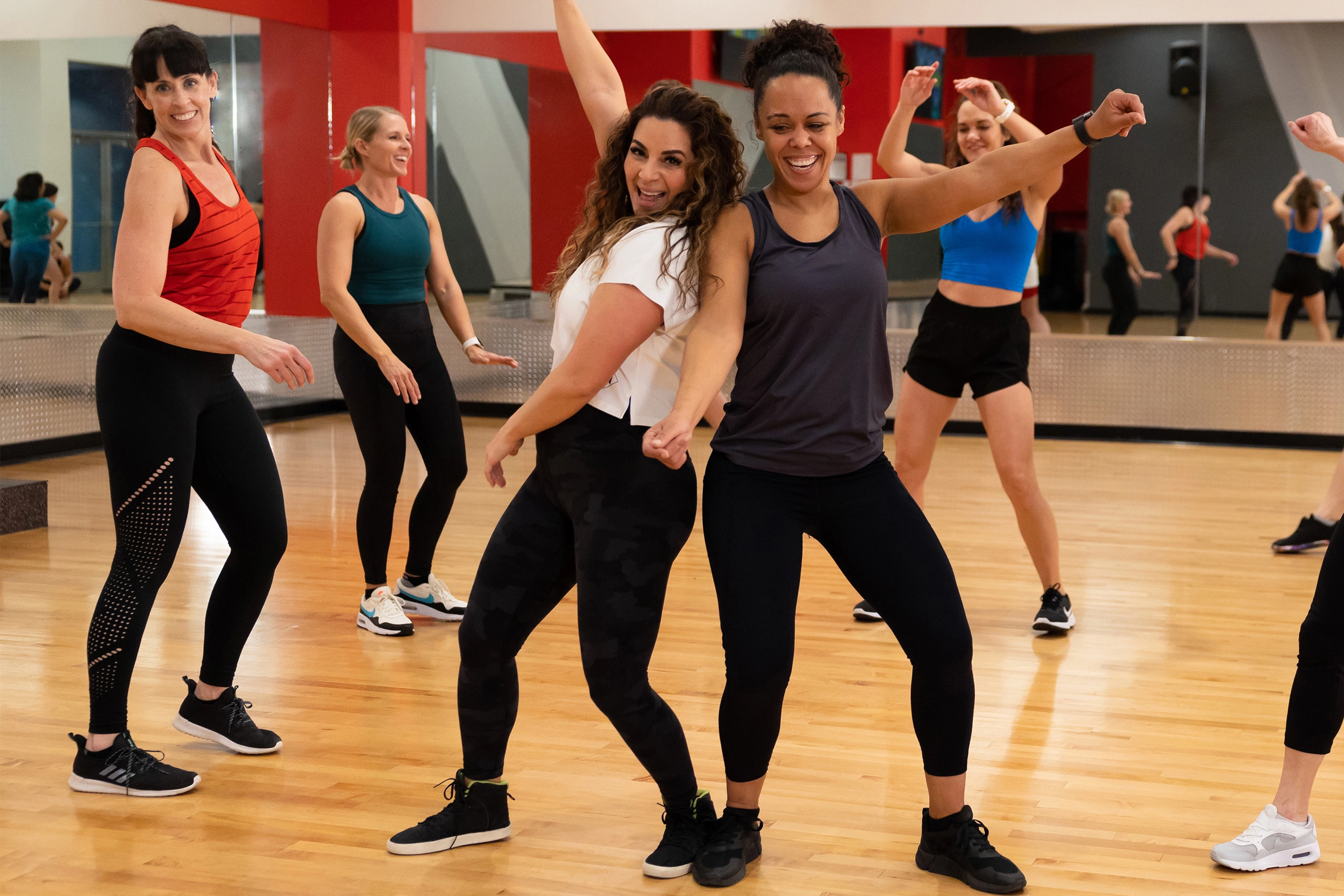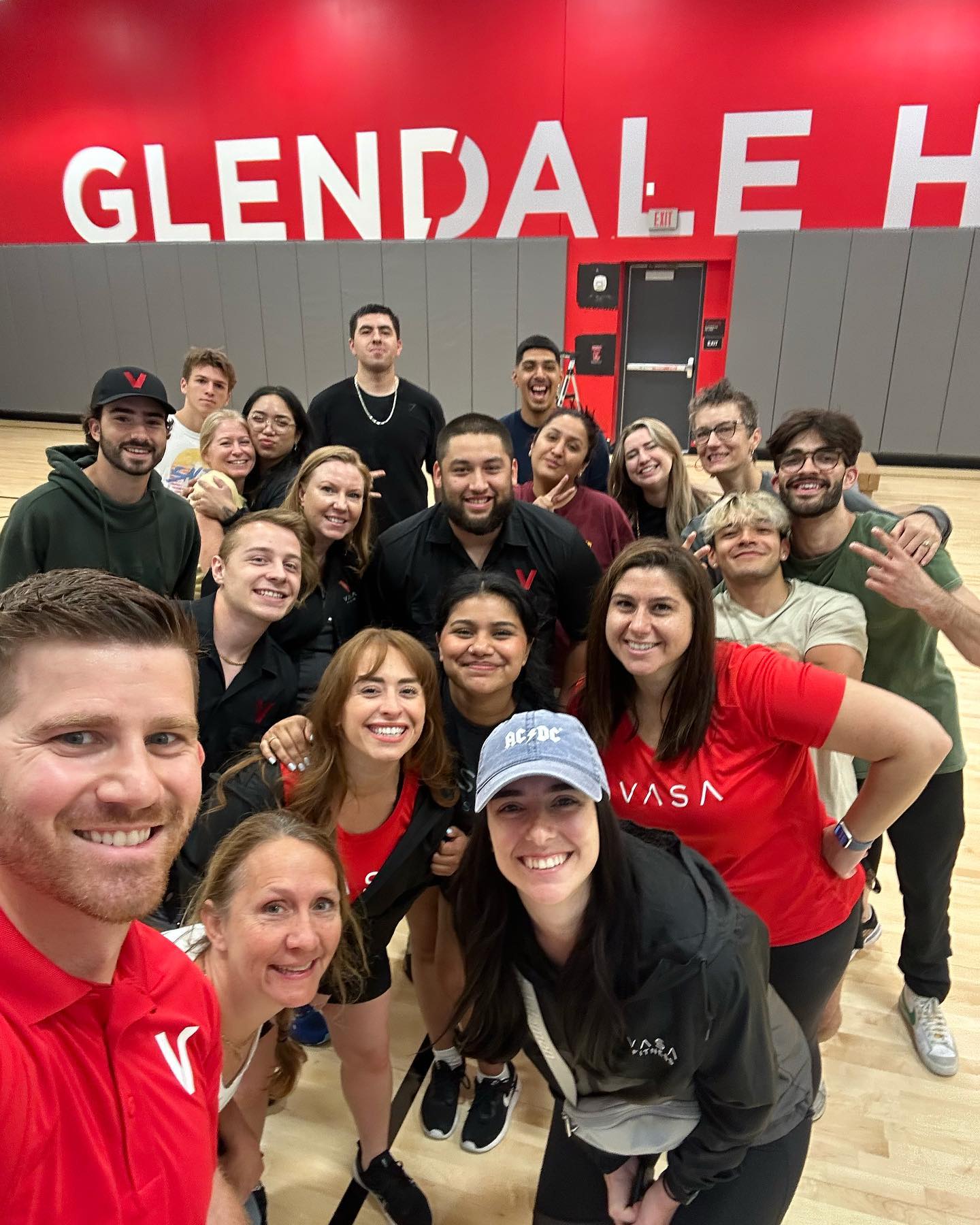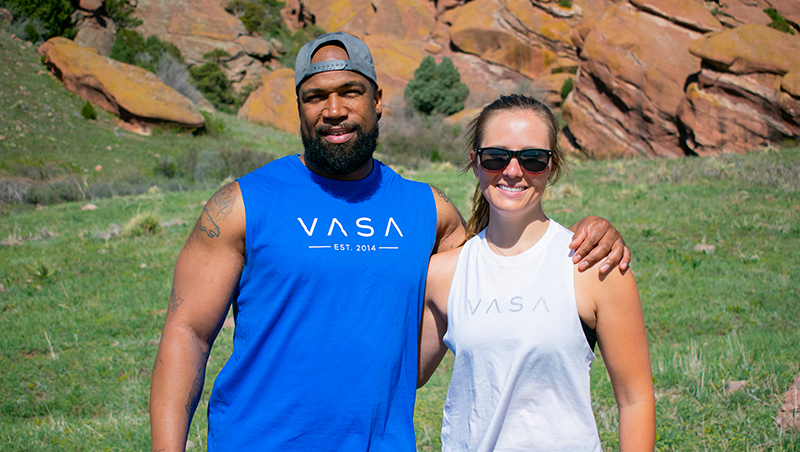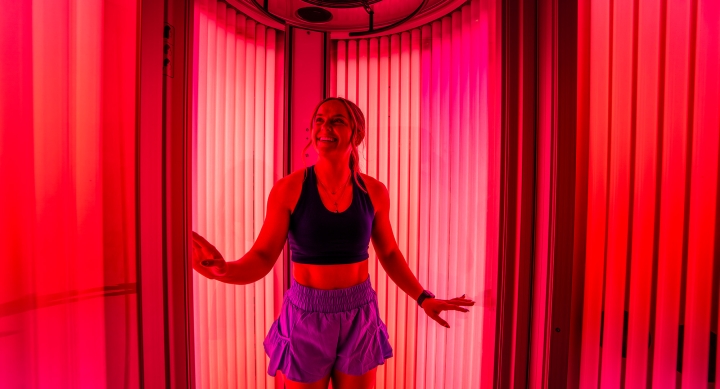There are six physical capabilities every healthy person should work on: strength, aerobic capacity, flexibility, balance, power, and stability. All of these combine to create a strong, mobile body that will keep you safe and allow you to recover quickly. As we age, flexibility and balance tend to diminish primarily because our strength decreases. While many think stretching is the only way to increase flexibility, strength training can actually help improve muscular strength AND mobility, especially in older adults.
The body is like a pulley system of paired muscles: when one area contracts and is shortened, the other relaxes and is lengthened. Think of a bicep curl. When you contract, or shorten, your bicep, your tricep is lengthened. When you contract your tricep, your bicep is lengthened. Oftentimes we work one muscle but fail to equally work the corresponding muscle. This causes our muscles to feel tight and stiff. In order to help these tight muscles “loosen”, we need to focus on strengthening the other muscle in the pair.
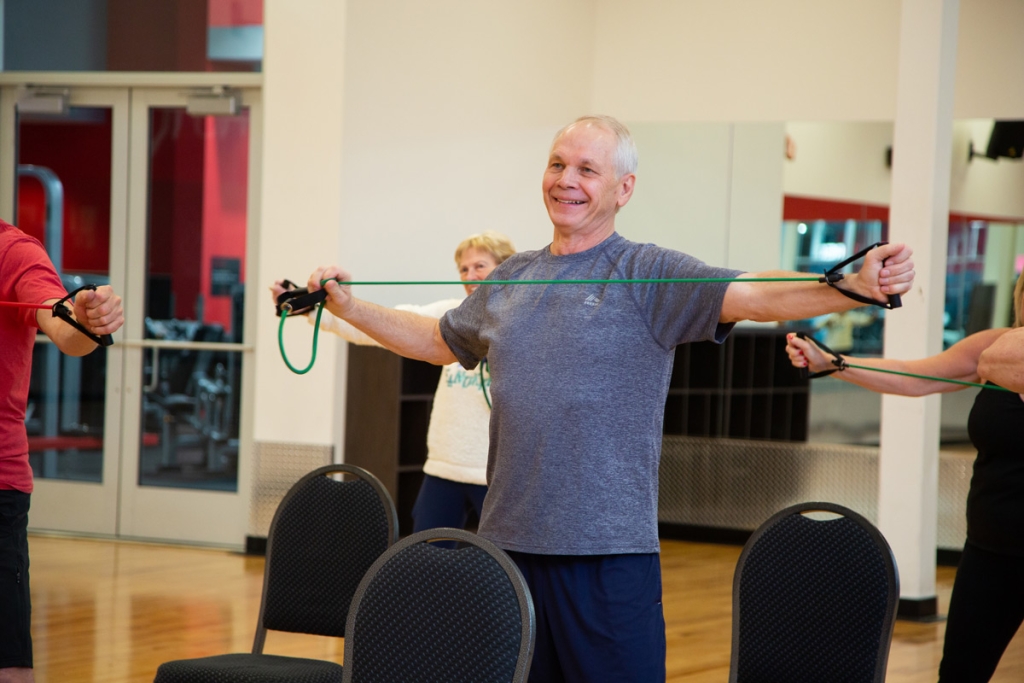
It’s important for seniors to focus on the strength and mobility of their shoulders/chest and hips/back so posture remains upright and doesn’t begin to curve, which causes unnecessary pressure on the spine, neck, and low back. Here are a few of our favorite stretches:
Doorway Pec Stretch
- Stand in an open doorway. Raise arms above your head, bend elbows to create a 90-degree angle, and place palms on the door frame.
- Slowly step forward with one foot. Pull yourself forward using your torso and feel the stretch in your shoulders and chest. Stand upright, don’t lean forward, and focus on breathing in through your nose and slowly out through the mouth.
- Hold for 30 seconds. Step back and relax.
- Repeat 3 times.
Assisted Standing Hip Flexor Stretch
- Use a TRX Suspension Trainer, chair, countertop, railing or something sturdy for support.
- Take a half back with the right leg.
- Keeping your torso upright, push your hips forward so you feel a stretch along the front of your right leg. Focus on breathing in through your nose and slowly out through the mouth.
- Hold this position for 30 seconds.
- Repeat this stretch with your left leg in back.
- Repeat 2 times on each side.
Cat-Cow Spinal Mobility Exercise
- Begin on your hands and knees in table pose with a neutral spine. As you inhale, move into cow pose by pressing your chest forward, arching your back towards the floor, and allowing your belly to sink. Lift your head, relax your shoulders away from your ears, and gaze straight ahead.
- As you exhale, come into cat pose by rounding your spine upward, tucking in your tailbone, and drawing your pubic bone forward. Release your head toward the floor.
- Relax and focus on breathing rather than how far you get in each position.
- Spend 15 to 30 seconds in each pose. Repeat 3 times.
Stretching shoulders, hips, and backs can improve mobility and increase range of motion. Once tight muscles on the front side of the body are stretched, add strength movements for the back side of the body to help improve posture and flexibility. Maintaining strength throughout one’s lifespan helps to ward off sarcopenia (muscle loss) and osteopenia (bone loss), both of which can lead to a poorer quality of life in later years.
The stronger the body is, the better it can maintain an upright position. Bones stay stronger and muscles stay intact with strength training, but it’s important to use appropriately heavy loads and full ranges of motion. Older adults are at a greater risk of injury due to falls, so adding strength can help prevent falls and improve resilience to injury. When training for strength, moving through the greatest, pain-free range of motion is important. The stronger one can be in deeper ranges of motion, the easier it is to maintain balance and stability.
The following strength movements pair nicely with the stretches above to improve flexibility and maintain balance:
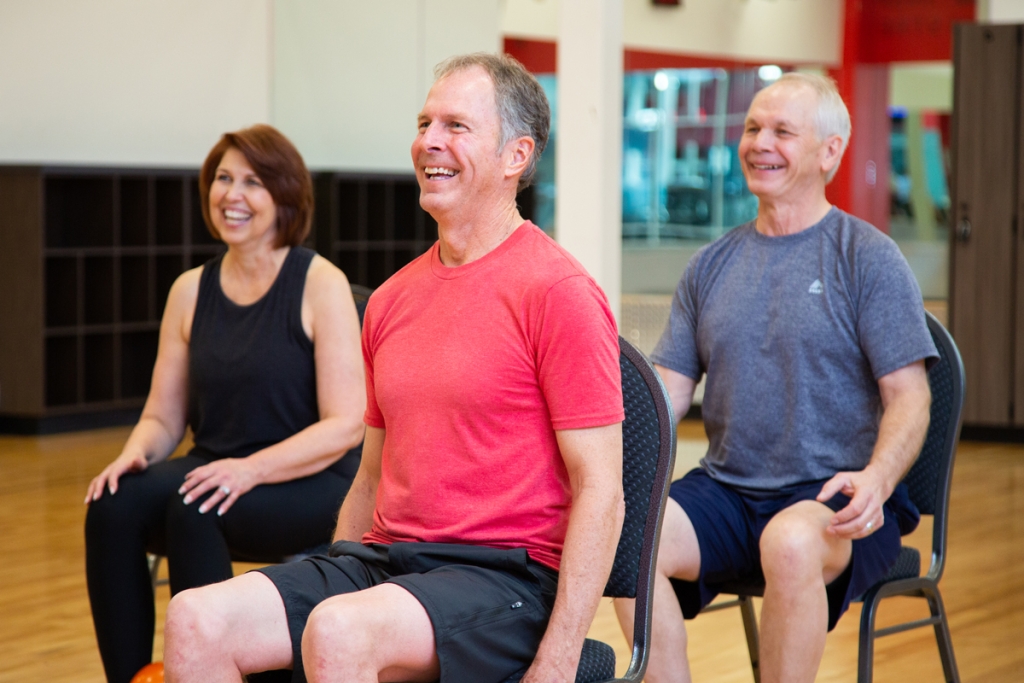
Sit to Stand
- Start with a box or chair that is no lower than the crease of the knees.
- Without using the arms or hands, gently sit down on the box/chair in a slow, controlled motion.
- Without using your arms or hands, drive through the feet to bring the hips forward and up off the box/chair to a standing position.*
- Repeat for 8-15 reps. Complete 2-4 sets.
*If this is too challenging, increase the height of the seat so all reps can be completed without help from the upper body. Slowly lower the height of the chair every few weeks.
High Angle Resistance Band/Cable Face Pull
- Attach a long resistance band to a point forehead height or higher or adjust a cable pulley to that same height.
- Stand tall. Hold one side of the band/rope in each hand using an overhand grip (palms facing the floor). Your arms should be fully extended straight in front of you.
- Bend your elbows and pull your hands towards the bridge of your nose, squeezing your shoulder blades together as you pull.
- Repeat for 8-15 reps. Complete 2-4 sets.
Assisted Split Squat Hold
- Use a squat rack or TRX Suspension Trainer to assist you.
- Step back with one foot and lower the knee into a lunge position.
- Balance as much as you can on the front leg, using your hands as little as possible to ensure you don’t fall.
- Hold the lunge position for 20-30 seconds on each side. Complete 2-4 sets.
For many seniors, adding flexibility and increasing physical activity just a few days each week can make a big impact on quality of life. Adding strength to the muscles that need it and stretching the really tight muscles helps improve posture and reduce aches and pains so you can live a mobile, independent life.
RECOMMENDED
SUBSCRIBE TO OUR BLOG
Enter your email to start receiving our blog emails!
